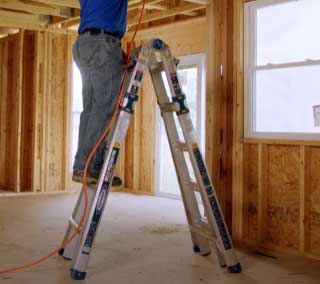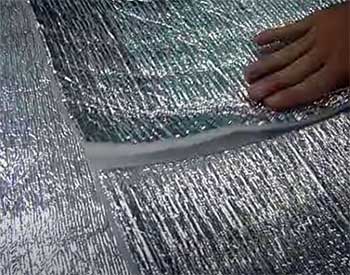Imagine flipping on your living room lamp or starting your coffee maker without lifting a finger—all from your phone or with a simple voice command. That’s the magic of the Kasa Smart Plug, a game-changer for anyone looking to dip their toes into smart home tech.
I’ve been using it for months, and trust me, it’s a must-have for convenience, control, and even a bit of fun. Whether you’re a tech newbie or a smart home pro, this little device delivers.
Here’s why you should grab one and make your home smarter today.
My Journey With The Kasa Smart Plug
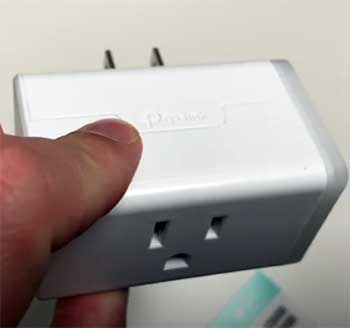
I’ll never forget the first time I plugged in my Kasa Smart Plug (model HS103).
It was a chilly evening, and I was tired of trudging across the room to turn off my Christmas tree lights. I’d heard about smart plugs but wasn’t sure if they were worth the hype.
Spoiler alert: they totally are.
Setting it up was a breeze—I plugged it into an outlet, downloaded the Kasa app on my phone, and followed the straightforward instructions.
Within minutes, my living room lamp was connected to my Wi-Fi, and I was controlling it from my couch like some kind of tech wizard.
What struck me first was how intuitive the process was. The Kasa app guided me step-by-step, asking for my 2.4GHz Wi-Fi details (a must for this plug) and prompting me to name the device—mine’s called “Cozy Lamp” for obvious reasons.
I paired it with my Amazon Echo, and suddenly, I was saying, “Alexa, turn on Cozy Lamp,” and watching my room light up without moving an inch. It felt like living in the future. I’ve since added two more plugs to my home—one for my bedroom fan and another for my coffee maker—and each has made my daily routine smoother.
The ability to schedule my coffee maker to start brewing at 6:45 AM? Life-changing. I’m not exaggerating when I say this plug has turned mundane tasks into moments of delight. Whether I’m at home, at work, or on vacation, I can control my devices with a tap or a voice command, and it’s been a reliable companion every step of the way.
What Makes The Kasa Smart Plug Stand Out?
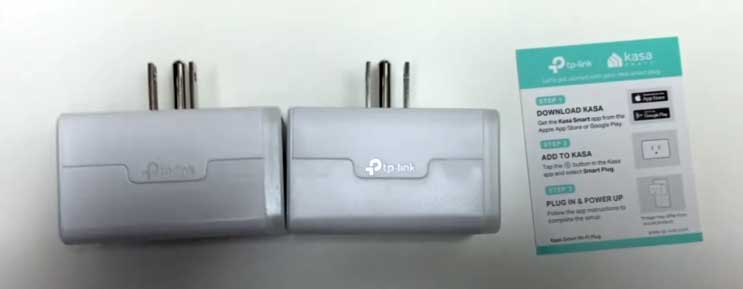
- Seamless Voice Control with Alexa and Google Assistant
One of the best things about the Kasa Smart Plug is how effortlessly it integrates with Alexa and Google Assistant. I’m an Alexa user, and the hands-free convenience is unreal.
Picture this: you’re juggling groceries, your phone’s buried in your bag, and you just say, “Alexa, turn on the kitchen light.” Boom—light’s on. It’s responsive, with no noticeable lag, and it works every time I’ve tried it.
If you’re a Google Home user, you’ll get the same smooth experience. The plug doesn’t play favorites—it’s compatible with both, plus IFTTT for those who love advanced automation. This feature alone makes it worth its weight in gold, especially if you’re already invested in a voice assistant ecosystem.
- Control From Anywhere
The Kasa app is your command center, letting you turn devices on or off from anywhere with an internet connection. I’ve used it to turn off my bedroom fan from the office when I realized I’d left it running, saving me from worrying about wasted energy.
On vacation, I set my living room lamp to turn on at dusk, giving my house that “someone’s home” vibe. The app’s interface is clean and user-friendly, though it took me a minute to find the scheduling settings the first time. Once I got the hang of it, I was setting up routines like a pro.
It’s empowering to have that level of control at your fingertips, no matter where you are.
- Scheduling Made Simple
Speaking of routines, the scheduling feature is a standout. You can set timers or countdowns to automate your devices. For example, I have my Christmas lights programmed to turn on at 6 PM and off at 11 PM, creating a cozy holiday glow without any effort.
You can even set one-off schedules—like turning on a humidifier for an hour in the middle of the day. The flexibility is fantastic, and it’s helped me save energy by ensuring devices aren’t running unnecessarily.
Plus, the “Away Mode” randomly turns lights on and off to mimic occupancy, which is great for peace of mind when you’re out of town.
- Easy Setup and Reliability
Setting up the Kasa Smart Plug is as simple as it gets. Plug it in, open the app, connect to your 2.4GHz Wi-Fi, and you’re done. No hubs, no complicated tech know-how needed. I was up and running in under five minutes, and I’m not exactly a tech genius.
The plug’s reliability is another big win. Designed in Silicon Valley and trusted by over 7 million users, it’s UL-certified for safety, with a flame-retardant shell and sturdy connections. In months of use, I’ve had zero connection issues or random outages, which is more than I can say for some other smart home gadgets I’ve tried.
- Compact Design
The Kasa Smart Plug’s compact size is a huge plus. Unlike some bulky smart plugs that hog both outlets, this one leaves the second socket free. I’ve got mine plugged into a crowded power strip, and it doesn’t block anything else.
It’s sleek, unobtrusive, and blends into my home without screaming “tech gadget.” There’s also a physical on/off button on the side, which is handy for manual control if your Wi-Fi goes down or you just want to feel old-school for a second.
The Downsides of The Kasa Smart Plug
- Limited to 2.4GHz Wi-Fi
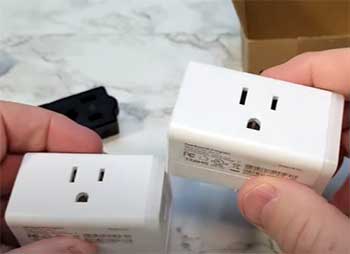
One thing that might catch you off guard is the 2.4GHz Wi-Fi requirement.
Most modern routers support both 2.4GHz and 5GHz bands, but if your phone defaults to 5GHz (like mine did), you’ll need to switch to 2.4GHz during setup.
It’s not a huge deal, but it tripped me up the first time until I realized what was going on.
If you’re in a crowded Wi-Fi environment—like an apartment building—you might notice slight interference, though I haven’t had issues in my suburban home.
- App Navigation Could Be Better
While the Kasa app is generally user-friendly, it’s not perfect. Finding specific settings, like advanced scheduling or scene creation, can feel a bit clunky at first. I Sheila, it’s not hard to figure out, but the menus could be more intuitive.
Compared to other apps I’ve used, it’s decent, but there’s room for improvement. I got used to it quickly, but a more streamlined interface would make the experience even smoother.
- No Advanced Device Feedback
The Kasa Smart Plug is straightforward—it controls power to the device plugged into it, but that’s it. It can’t tell you the status of the device itself. For example, if you plug in a computer, the plug won’t “know” whether the computer is on or off; it just controls the power flow.
This isn’t a dealbreaker, but it’s worth noting if you’re expecting more sophisticated feedback. For most uses, like lamps or fans, this isn’t an issue, but it’s something to keep in mind for complex electronics.
- No Energy Monitoring on Basic Models
Unlike some of Kasa’s pricier models, the HS103 doesn’t offer energy monitoring. I’d love to track how much power my fan or coffee maker is using, but this feature is reserved for models like the KP125M. It’s a minor gripe, but if you’re an energy nerd like me, you might miss this functionality.
Tips For Getting The Most Out of Your Kasa Smart Plug
- Keep the Firmware Updated
To keep your Kasa Smart Plug running smoothly, check for firmware updates in the Kasa app regularly. I got a notification about an update a couple of months after setup, and it took less than five minutes to install. Updates can improve performance and fix bugs, so don’t skip them.
The app usually prompts you, but you can manually check under the device settings. I’ve found that keeping the firmware current ensures my plugs stay responsive and reliable, especially when integrating with Alexa.
- Ensure Stable Wi-Fi
Since the plug relies on a 2.4GHz Wi-Fi connection, a strong signal is key. If you live in a large house or have a lot of Wi-Fi interference, consider placing your router closer to the plug or using a Wi-Fi extender.
I had a brief connection hiccup when I moved a plug to my garage, but adjusting my router’s position fixed it. If you run into issues, the app’s troubleshooting guide is surprisingly helpful—just follow the steps, and you’ll be back online in no time.
- Clean the Plug Regularly
Dust and grime can build up on the plug, especially if it’s in a high-traffic area like a kitchen. I wipe mine down with a dry cloth every couple of months to keep the contacts clean. Avoid using water or cleaning sprays, as they could damage the electronics.
A quick wipe keeps it looking and working like new. Also, make sure the outlet itself is clean and free of debris to ensure a solid connection.
- Use Compatible Devices
Stick to devices that draw 15 amps or less, like lamps, fans, or small appliances. I learned the hard way that plugging in a high-powered space heater caused the plug to overheat—not a good look.
Check your device’s power rating before connecting it to avoid any safety risks. The Kasa Smart Plug is UL-certified, but it’s not invincible, so play it safe.
- Experiment with Scenes and Automation
To really maximize the plug’s potential, play around with the app’s “scenes” feature. I set up a scene called “Movie Night” that turns on my living room lamp and dims it to 50% when I say, “Alexa, start Movie Night.”
It’s fun to customize, and you can create scenes for things like “Morning Routine” or “Bedtime.” Also, try grouping multiple Kasa devices in the app for one-tap control of several plugs at once—it’s a time-saver.
How Kasa Stacks Up Against Other Brands?
- Kasa Vs. EIGHTREE Smart Plug
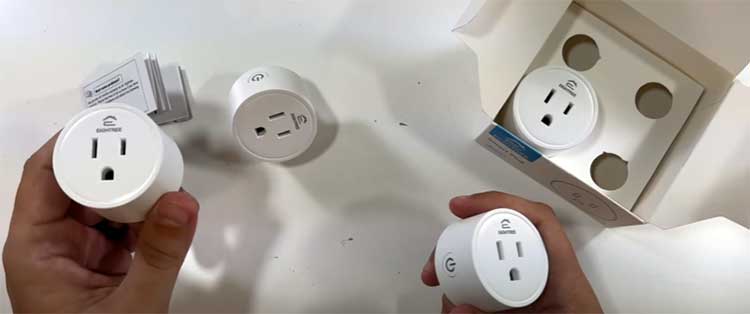
When I pitted the Kasa Smart Plug against the EIGHTREE Smart Plug, Kasa came out ahead for its sheer ease of use. Setting up the EIGHTREE plug was straightforward, but its app felt less polished than Kasa’s, with a slightly cluttered interface that made scheduling a chore.
Kasa’s compact design is a clear winner—EIGHTREE’s plug is bulkier and often blocks the second outlet in a standard wall socket. Both support Alexa and Google Assistant, but Kasa’s response time felt snappier in my tests, especially with voice commands.
EIGHTREE offers energy monitoring on some models, which Kasa’s HS103 lacks, but you’ll pay a bit more for it. For reliability and a sleeker form factor, I’d stick with Kasa unless energy tracking is a must-have for you.
- Kasa Vs. Wemo Smart Plug
Comparing Kasa to the Wemo Smart Plug, I found Wemo’s app to be a bit more intuitive for scheduling and automation—its menus are easier to navigate than Kasa’s slightly clunky interface.
However, Kasa wins on setup simplicity. I struggled with Wemo’s initial connection to my Wi-Fi and Alexa, which was frustrating compared to Kasa’s five-minute setup. Wemo’s plug is also noticeably larger, often hogging both outlets in a dual socket, while Kasa’s slim design plays nice with crowded power strips.
Both are reliable once set up, but Kasa’s lower price point and consistent performance make it my go-to. Wemo’s occasional connectivity hiccups in my home tipped the scales in Kasa’s favor.
- Kasa Vs. Wyze Plug
The Wyze Plug is a budget-friendly rival, and I gave it a try to see how it stacked up. Both Kasa and Wyze are easy to set up, but Kasa’s app feels more refined, with clearer options for scenes and scheduling.
Wyze’s app buried some features in sub-menus, which slowed me down. Size-wise, Wyze plugs are chunkier, sometimes causing outlet conflicts, whereas Kasa’s compact build is a dream in tight spaces.
Wyze does offer energy monitoring on some models, an edge over the HS103, but its connectivity was less stable in my tests, dropping occasionally in a busy Wi-Fi environment. Kasa’s reliability and broader compatibility with IFTTT make it the stronger pick for most users.
Frequently Asked Questions (FAQ)
Absolutely, the Kasa Smart Plug is a fantastic choice for anyone looking to smarten up their home. It’s easy to set up, reliable, and works seamlessly with Alexa and Google Assistant. The scheduling and remote control features are a game-changer for convenience, and its compact design doesn’t hog outlets. While it lacks energy monitoring and requires 2.4GHz Wi-Fi, these are minor drawbacks compared to its performance and affordability. I’ve used mine for months without a hitch, and it’s a staple in my smart home setup.
Avoid plugging high-power devices like space heaters, air conditioners, or large appliances that draw more than 15 amps into the Kasa Smart Plug. It’s designed for smaller devices like lamps, fans, or coffee makers. I made the mistake of trying a heater once, and the plug got worryingly warm. Also, steer clear of devices that don’t retain their “on” state when power is restored, like computers, as the plug can’t control their internal power settings.
Yes, Kasa is worth every penny. For a reasonable price, you get a reliable, user-friendly smart plug that works with Alexa, Google Assistant, and IFTTT. The convenience of voice control, scheduling, and remote access makes daily life easier, and the compact design is a bonus. Compared to pricier options like Philips Hue or even Amazon’s plug, Kasa offers similar features at a better value. My three plugs have paid for themselves in convenience alone.
Kasa Smart is a brand owned by TP-Link, a Chinese company known for networking products. However, the Kasa Smart Plug is designed in Silicon Valley and UL-certified for safety, meeting high standards. TP-Link has faced scrutiny over security concerns with its routers, but there’s no evidence this affects Kasa plugs. I’ve had no issues with privacy or reliability, and with over 7 million users, it’s a trusted brand globally.
Wrapping It Up: Get Your Kasa Smart Plug Today
After months of using the Kasa Smart Plug, I can’t imagine going back to a non-smart home. It’s affordable, reliable, and makes life easier with voice control, scheduling, and remote access.
Despite minor quirks like the 2.4GHz Wi-Fi requirement and app navigation, it’s a top-tier smart plug that outperforms many competitors. If you want to upgrade your home with minimal effort, grab a Kasa Smart Plug.
It’s a small investment for a big dose of convenience and control.
